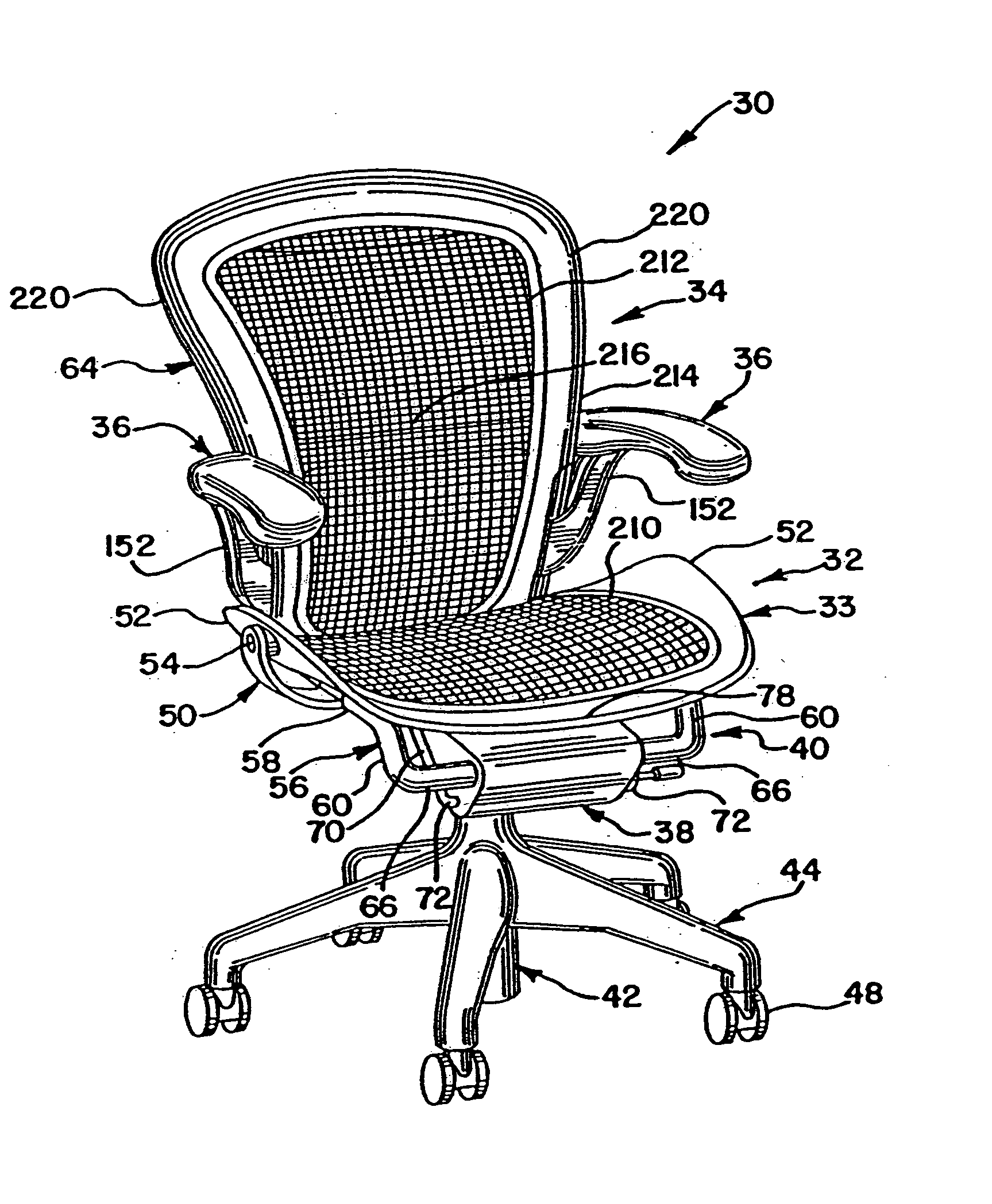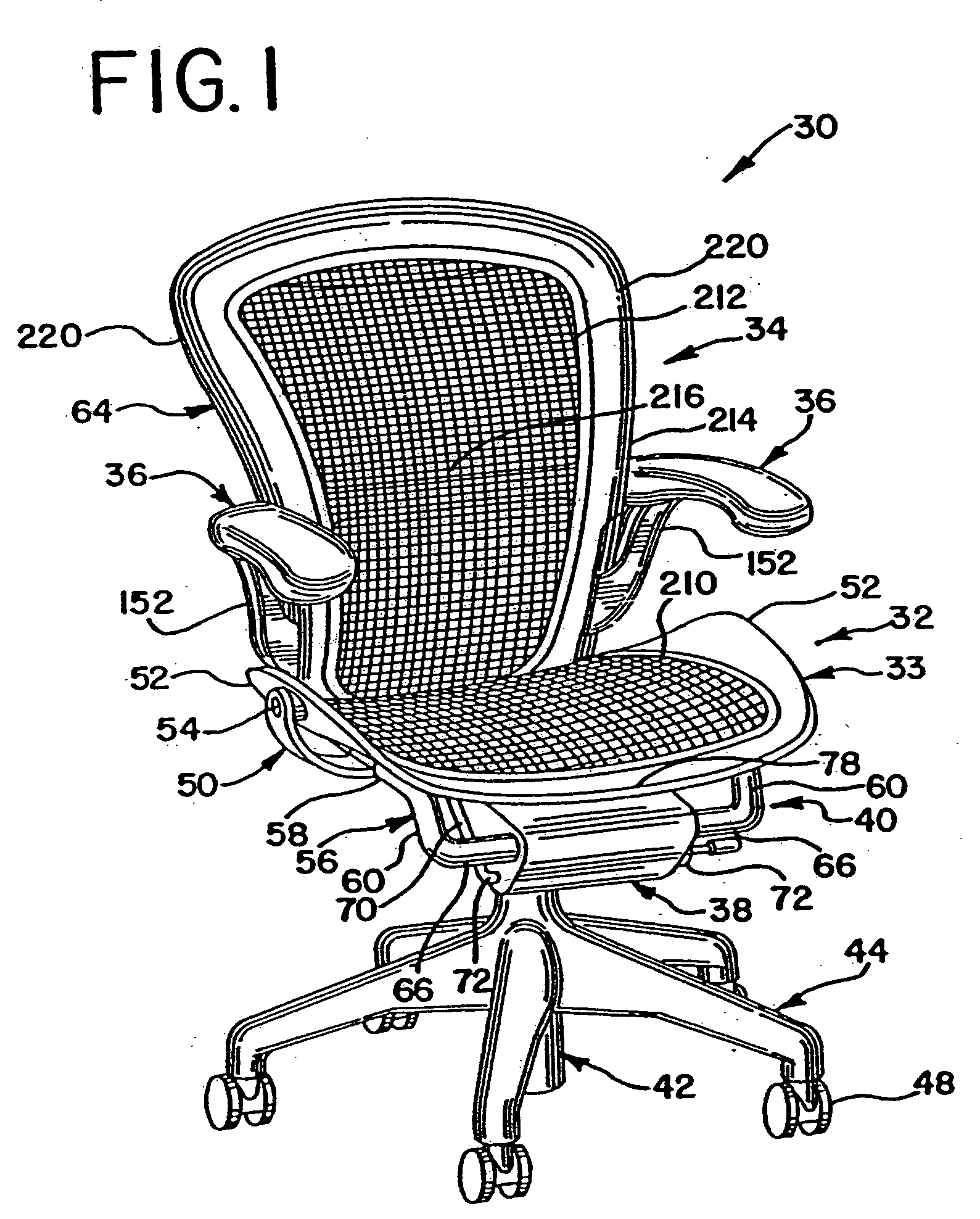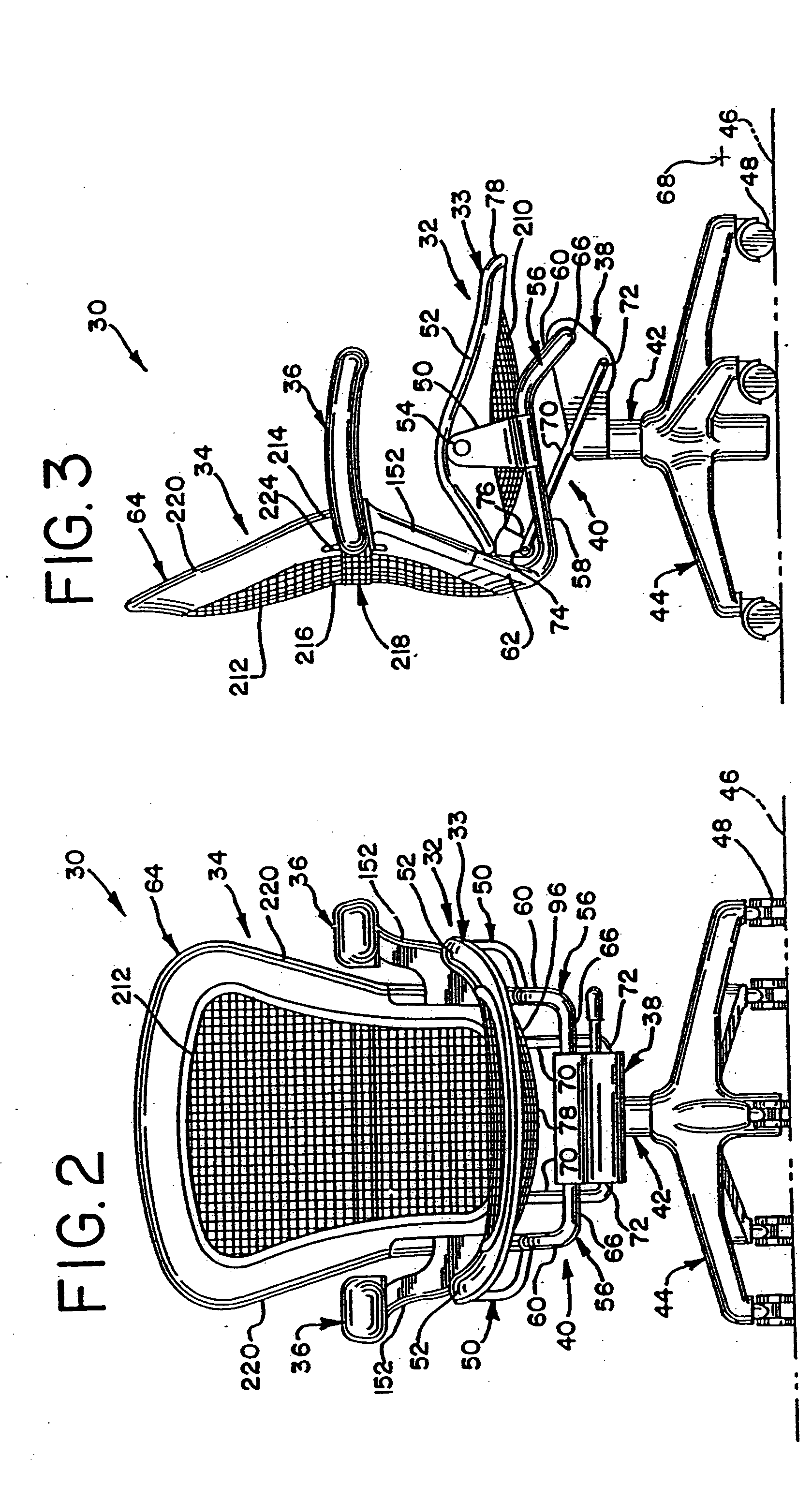Office chair
a technology for office chairs and backrests, applied in the field of office chairs, can solve the problems of uncomfortable pulling of user's clothing, none have comprehensively addressed the overall body posture, relative positioning of body parts, configuration and material of seats and/or backrests, etc., and achieve the effect of limiting the tilting of the sea
- Summary
- Abstract
- Description
- Claims
- Application Information
AI Technical Summary
Benefits of technology
Problems solved by technology
Method used
Image
Examples
Embodiment Construction
[0072] Referring to the drawings, FIGS. 1-7 show a preferred embodiment of a chair 30 in a middle tilt position. The chair 30 includes a seat 32, a backrest 34, and a pair of armrest assemblies 36. The seat 32 and backrest 34 are connected to a tilt control housing 38 by a linkage assembly 40. The tilt control housing 38 is mounted on a vertically adjustable, dual stage support column 42 which is secured to the center of a pedestal 44. The pedestal 44 is movably supported on a floor 46 by a plurality of casters 48 or the like.
[0073] In a preferred embodiment of the invention, the linkage assembly 40 includes a pair of first links 50 pivotally attached to upwardly extending side portions 52 of a seat frame 33 at pivot points 54 to define a pivot axis at substantially the hip joints of a user. A pair of second links 56 each have a substantially straight first section 58 to which the first links 50 are fixedly attached and a second section 60 angled downwardly from the first section 5...
PUM
| Property | Measurement | Unit |
|---|---|---|
| angle | aaaaa | aaaaa |
| angle | aaaaa | aaaaa |
| angle | aaaaa | aaaaa |
Abstract
Description
Claims
Application Information
 Login to View More
Login to View More - R&D
- Intellectual Property
- Life Sciences
- Materials
- Tech Scout
- Unparalleled Data Quality
- Higher Quality Content
- 60% Fewer Hallucinations
Browse by: Latest US Patents, China's latest patents, Technical Efficacy Thesaurus, Application Domain, Technology Topic, Popular Technical Reports.
© 2025 PatSnap. All rights reserved.Legal|Privacy policy|Modern Slavery Act Transparency Statement|Sitemap|About US| Contact US: help@patsnap.com



